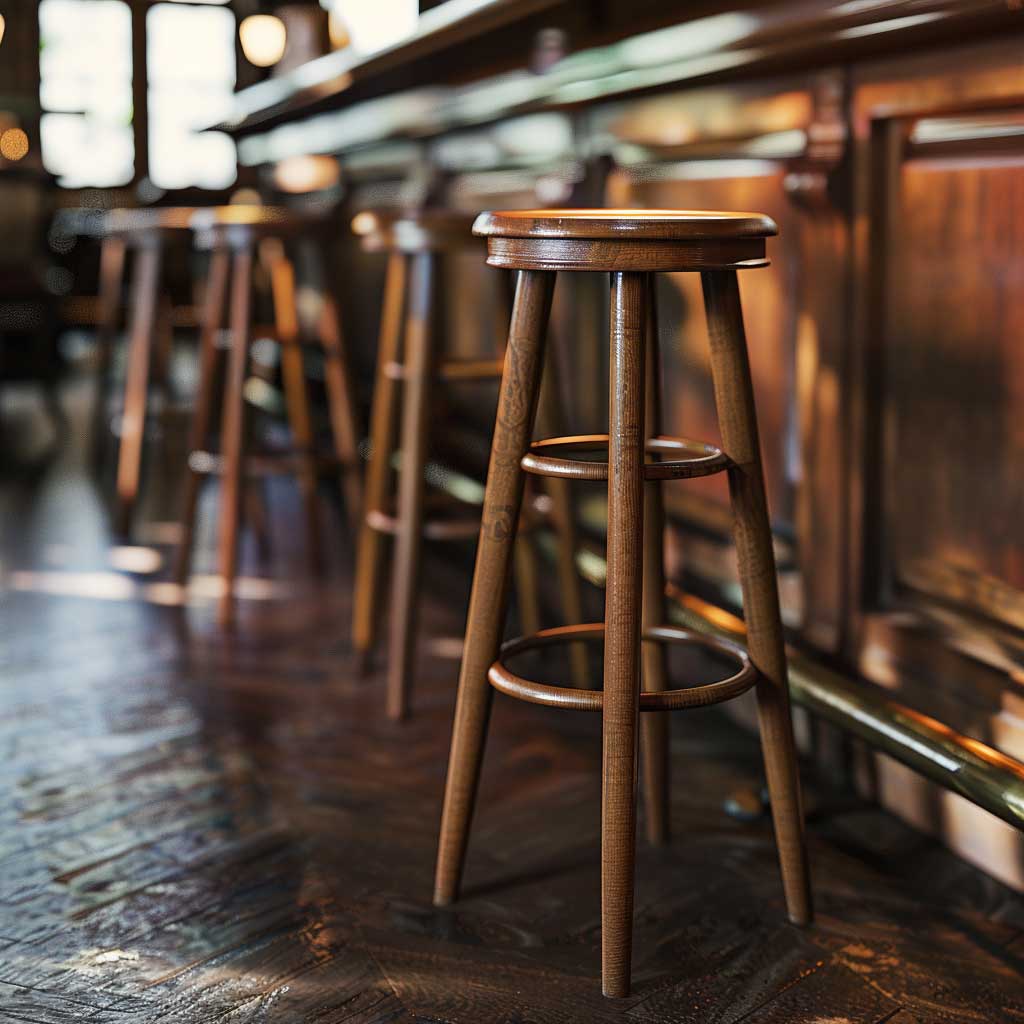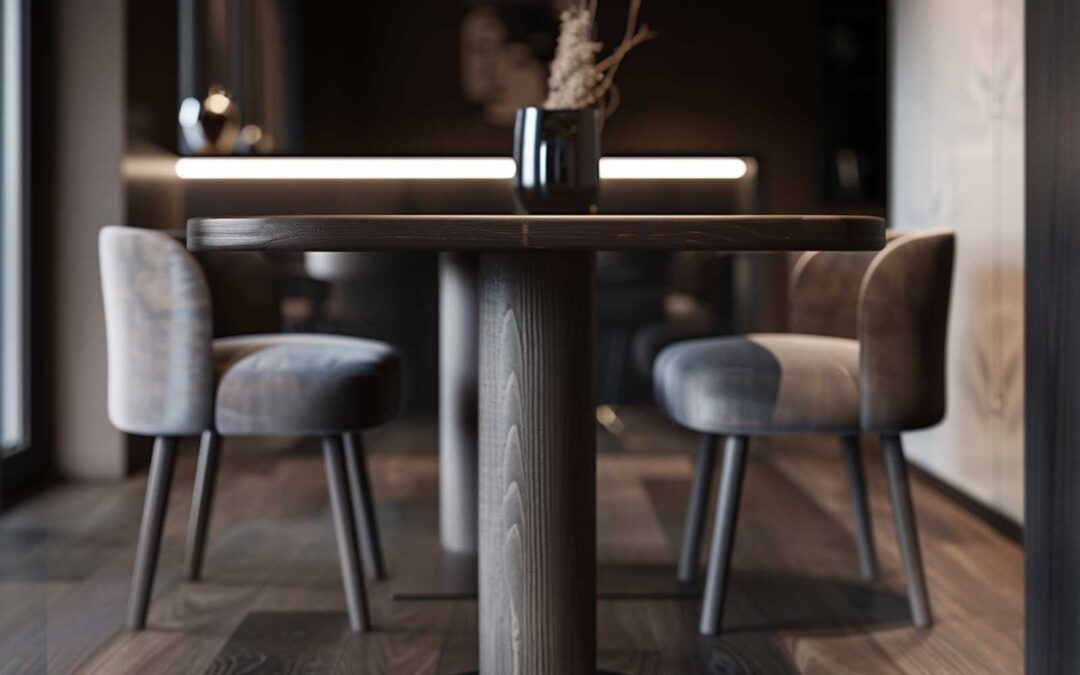Wood cylinders have long underpinned woodworking, providing essential structural and decorative functions for centuries. These cylindrical wooden parts have been valued for their strength and aesthetic versatility. Today, they find applications across many industries, leveraging advances in processing technologies to meet modern demands. But what types, uses, and care practices are essential for your specific project needs?
Exploring the Different Types of Wood Cylinders
Wood cylinders are critical components in various industries, offering structural integrity and aesthetic enhancement. Understanding the types and their unique properties is crucial for choosing the right cylinder for specific applications. Here, we delve into the differences between single-piece and multi-piece cylinders and laminated versus solid wood cylinders, outlining their suitability for different uses.
Single-Piece vs. Multi-Piece Cylinders
Choosing between single-piece and multi-piece wood cylinders hinges on required strength, budget constraints, and design complexity. Both types have distinct advantages and uses in the woodworking and manufacturing sectors.
Single-Piece Cylinders
Single-piece wood cylinders are valued for their structural strength and aesthetic coherence. They are carved or turned from a single block of wood, ensuring no joints or glue lines disrupt their uniformity.
This makes them particularly valuable for high-quality furniture, architectural columns, or any application where a seamless look is paramount. Their strength is ideal for supporting structures where stability is critical.
Multi-Piece Cylinders
Multi-piece cylinders, on the other hand, are constructed by joining several wood segments together. This method allows for greater flexibility in design and can be more cost-effective than single-piece options.
Multi-piece cylinders are often used where intricate designs or large dimensions are required, such as in decorative panels or custom furniture that emphasizes unique shapes. While still considered sturdy, they generally do not provide the same level of structural integrity as single-piece cylinders and are better suited for non-load-bearing applications.
Laminated vs. Solid Wood Cylinders
Deciding between laminated and solid wood cylinders often depends on the project’s specific requirements, including considerations of durability, weather resistance, and visual appeal.
Laminated Wood Cylinders
Laminated wood cylinders are manufactured by bonding layers of wood veneers or strips under pressure and heat with adhesive, creating a composite resistant to warping and cracking. This type is particularly suitable for outdoor furniture, maritime applications, and anywhere moisture fluctuations occur. The lamination process also includes different wood types, which can be strategically placed to optimize strength and minimize cost.
Solid Wood Cylinders
Solid wood cylinders offer the classic appeal of natural wood grain, which is often sought after for luxury furniture items, artisan crafts, and when the aesthetic of natural wood is a design priority. Each cylinder is cut from a single piece of wood, making selecting high-quality timber free from defects critical. While solid wood cylinders offer unmatched beauty but require careful maintenance and are less adaptable to extreme environmental conditions than their laminated counterparts.
Practical Uses of Wood Cylinders in Various Industries
Wood cylinders are essential components across various industries, valued for their structural integrity and versatility. Let’s explore how these cylinders are utilized in different sectors.
Furniture Design
Wood cylinders are integral to modern and traditional furniture manufacturing, offering robust support and aesthetic versatility. In furniture design, these cylinders primarily function as legs for tables and chairs, where durability meets design.
- Tables and Chairs: Wood cylinders provide a solid foundation for dining tables, coffee tables, and chairs. Their natural appearance and strength are ideal for furniture that combines functionality with decorative appeal.
- Customizable Options: Wood cylinders’ adaptability allows designers to tailor dimensions and finishes to specific furniture styles, from rustic to contemporary, ensuring each piece is unique and aligned with current trends.
The use of wood cylinders in furniture design enhances the structural integrity of the pieces and adds a timeless elegance that can be customized to fit any décor style. This makes them a popular choice for both residential and commercial furniture.
Architectural and Decorative Applications
In architecture, wood cylinders are not only structural elements but also key decorative features. They enhance the aesthetic of buildings and interiors, making them functional art pieces.
- Structural Columns and Beams: Wood cylinders are often used as supportive columns or beams in building construction. They provide the necessary strength for structural applications while adding a touch of natural beauty.
- Decorative Elements: Beyond support, these cylinders serve as decorative fences, stair railings, or standalone features in lobbies and garden settings. Their versatility makes them a preferred choice for architects looking to introduce organic design elements into their projects.
Architecturally, wood cylinders offer a blend of strength and beauty, making them indispensable in creating spaces that are both functional and visually appealing. Their ability to be molded into various forms and finishes enables architects and designers to seamlessly integrate with the overall design theme.

Commercial and Retail Displays
Wood cylinders have a significant role in commercial spaces, particularly in creating visually appealing displays that attract customers.
- Retail Fixtures: Utilized in retail settings, wood cylinders can be crafted into racks, display stands, or shelves that not only hold products but also enhance the overall shopping experience with their warm, inviting appearance.
- Exhibition Stands: For exhibitions and trade shows, these cylinders provide sturdy and stylish structures that are easy to customize and reconfigure, making them ideal for temporary setups that require both durability and ease of assembly.
In commercial and retail environments, wood cylinders are prized for their adaptability and aesthetic value, serving as structural elements and key components of the visual merchandising strategy. Their functional diversity supports various display needs, reinforcing brand identity and enhancing consumer interaction.
Outdoor and Recreational Applications
The durability of wood cylinders makes them suitable for outdoor environments, where they withstand various weather conditions while maintaining their structural integrity and visual appeal.
- Garden Structures: In landscaping and garden design, wood cylinders can be transformed into pergolas, arbors, and trellises, offering support for climbing plants and a focal point within natural settings.
- Recreational Equipment: They are also used to construct outdoor furniture such as benches and picnic tables and playground structures, where safety and resilience are paramount.
Each of these applications showcases the flexibility and functional beauty of wood cylinders. Whether used in high-stress environments or as decorative accents, wood cylinders remain indispensable in numerous industries, proving their worth as foundational elements and key design features. This blend of utility and aesthetics ensures that wood cylinders remain at the forefront of both practical and creative ventures.
The application of wood cylinders in outdoor and recreational settings demonstrates their durability and aesthetic flexibility. These qualities make them ideal for enhancing outdoor spaces and recreational areas, providing functionality and a natural aesthetic that complements the surrounding environment.
Maintenance and Care for Wood Cylinders
Keeping wood cylinders in top condition involves regular and careful upkeep. Regular cleaning with a soft, damp cloth can remove dust and prevent buildup that might obscure the wood’s natural patterns.
It is also essential to protect wood cylinders from extreme environmental conditions; they should not be exposed to prolonged direct sunlight or excessive moisture, as these can cause warping or fading. To further enhance their durability and appearance, applying a suitable wood sealant or finish can protect against scratches and enhance the wood’s natural color, ensuring it remains vibrant and resistant to wear.
Repairing Damaged Wood Cylinders
Despite the best care, wood cylinders can sustain damage through regular use or accidental impacts. When this happens, it’s crucial to address these issues promptly to restore their functionality and appearance. Small scratches or dents can often be treated with a bit of wood filler and a touch-up of stain or paint.
More significant damage, such as cracks or splits, may require more extensive repairs, such as clamping and gluing or even refinishing the entire piece. For the best results, it’s advisable to consult with a professional who can assess the damage and recommend the most effective restoration techniques. This ensures that the repaired cylinder matches the original in strength and beauty, making the repair virtually undetectable.
The care you give to wood cylinders preserves their beauty and structural integrity, enabling them to serve their purpose for years to come. Whether part of a cherished piece of furniture or an architectural feature, well-maintained wood cylinders can continue to enhance spaces with their functional elegance.
Selecting the Right Wood Cylinder for Your Project
Choosing the correct wood cylinder is crucial for ensuring the success of your woodworking or architectural project. This selection process involves several key considerations, each contributing significantly to the final product’s functionality and aesthetic.
Factors to Consider When Choosing Wood Cylinders
Selecting the ideal wood cylinder requires a careful evaluation of the specific needs of your project. Key considerations include:
Type of Wood
The type of wood not only affects the appearance but also the strength and durability of the cylinder. Hardwoods like oak and maple offer robustness for high-stress applications, while softer woods like pine are suitable for lighter duties.
Dimensions
The size and shape of the cylinder should align with the project’s structural and design requirements. Choosing dimensions that support the load and fit the spatial configurations is crucial.
Finish
The choice of finish can enhance the wood’s natural beauty or apply a protective layer that combats environmental stresses. Select a finish that complements the project’s aesthetic and provides the necessary durability.
Wood cylinders are foundational to many design and construction projects, offering structural integrity and aesthetic versatility. As you consider incorporating wood cylinders into your next project, remember the importance of choosing the right type, dimensions, and finish to ensure optimal performance and appearance.
At Keller Wood Products, we are here to assist you in making these critical decisions with our expertise and a wide range of customizable options. Unlock the potential of your next project with us. Get in touch now!

